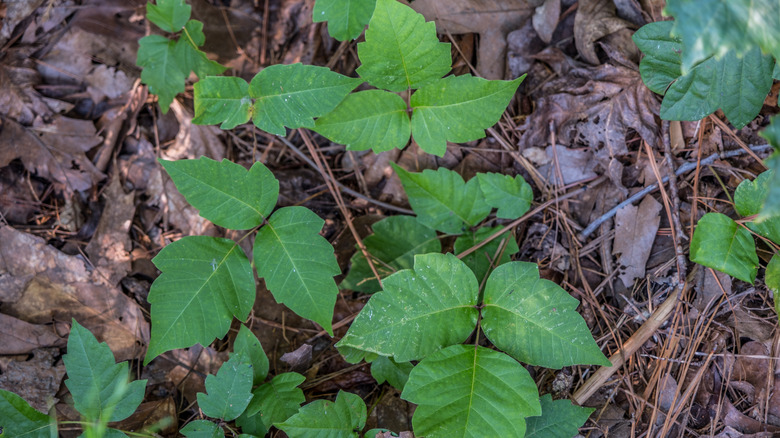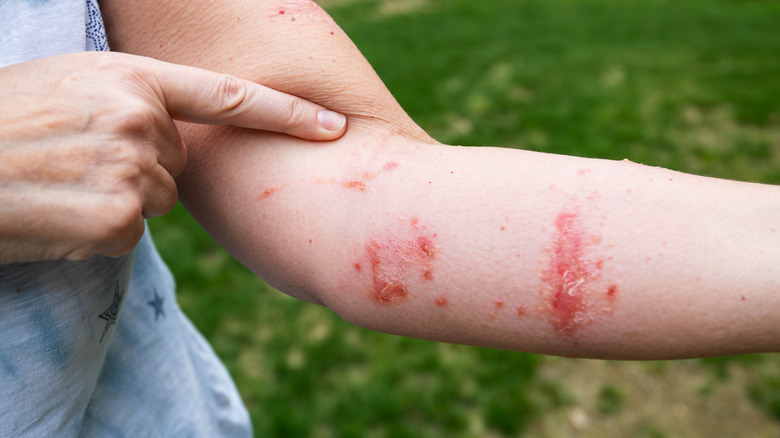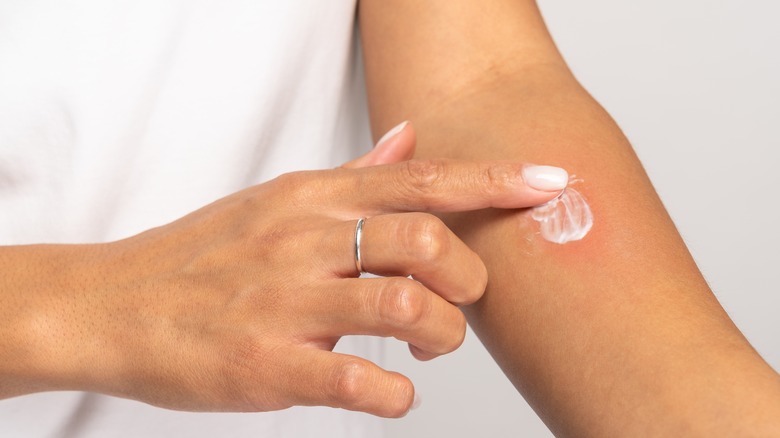Is A Poison Ivy Rash Contagious?
Poison ivy is a common plant found in North America that can cause a rash when its leaves come into contact with skin. Per the University of Florida, the rash is caused by an oil called urushiol, which is present in all parts of the poison ivy plant.
The itchy, painful rash caused by poison ivy typically appears within 24 to 72 hours after contact with the plant, and it can last for up to three weeks, per WebMD. Symptoms can include red blisters and swelling of the skin, explains the Mayo Clinic.
To prevent contact with poison ivy, it is important to learn how to recognize the plant. Poison ivy typically has three leaves, with younger leaves starting off as red before maturing to green. It can grow as a vine or shrub and can be found in wooded areas. Wearing protective clothing, such as long-sleeved shirts, pants, and gloves, can help prevent skin contact with the plant while outdoors.
Can a person with poison ivy spread it to another person?
According to the Food and Drug Administration (FDA), a poison ivy rash is not contagious and cannot be spread from person to person. However, the rash can spread if the oil is not washed off the skin soon after contact with the plant. Furthermore, the oil can remain active for years on clothing and tools that have come into contact with the plant until those items are washed. The oil can also transfer to other parts of the body or to other people or animals if they come into contact with these unwashed items, explains the FDA.
The severity of the rash can vary depending on the amount of urushiol that comes into contact with the skin, says the Mayo Clinic. Some people may only develop a mild rash, while others might have a severe reaction. In rare cases, a severe allergic reaction can occur, which can lead to difficulty breathing if smoke is inhaled from burning poison ivy, explains the clinic.
How to treat and prevent a poison ivy rash
If you come into contact with poison ivy, the Mayo Clinic advises cleaning contaminated objects as soon as possible to remove the urushiol oil. This can help to reduce the severity of the rash. It's also important to avoid scratching the rash, as this can lead to further irritation and infection, explains the clinic.
According to the American Academy of Dermatology Association (AAD), you can also treat the rash with over-the-counter creams and lotions. Some common options include calamine lotion and hydrocortisone cream. These creams and lotions can be used to relieve itching and pain, but a doctor may prescribe an oral antihistamine, says the association. They may also prescribe antibiotics if there is an infection (via the Mayo Clinic).
If the rash is severe or you experience a fever, swollen lymph nodes, or severe itching, you should seek medical attention.



